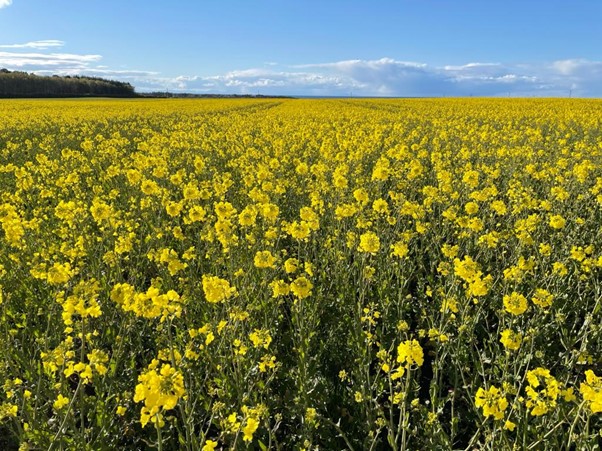Winter Oilseed Rape – Some Over-Winter Messages
20 December 2022Winter oilseed rape has generally established well this back end, with many crops drilled early and into moist, warm soils. Getting crops drilled in good time is an essential tool for getting good emergence and good plant survival, and larger plants in autumn will be more resilient to pest pressures such as slugs, flea beetles and even pigeons. However early drilling could be one of the practices that is driving an increase in the amount of clubroot being detected in the crop – the earlier the crop is in, the longer the disease has to infect and do its worst. But early drilling is by no means the only reason that we are seeing more clubroot – warmer and wetter autumns suit the development of the disease, and it is relatively common to see patches of poorly growing plants by the early autumn, and for clubroot to be diagnosed as the cause.
It is always worth checking out the cause of poor patches of oilseed rape because knowing where clubroot is on a farm can really help with avoiding unintended movement in to clean fields. Of the limited tools available to us in fighting clubroot, keeping it out of a field in the first place is by far the best. If you keep up-to-date records of where clubroot is on a farm it can be really helpful in planning field operations so that you can move kit and machinery in an order that finishes rather than starts in infected fields. In an ideal world machinery would be cleaned down between fields but, with peaks of workload, that is almost an impossible ask. If you use contractors, it is really helpful to discuss biosecurity between fields with them. And don’t limit that to contractors who are in mapping, sampling, spraying or walking crops – there is possibly a greater risk from contractors that don’t have any particular crop experience such as fencers or contractors putting in power or pipelines.
If, when you first notice clubroot, it is in relatively contained patches (for example close to the gate) then it is worth trying to manage the spread within a field too. You could just leave the affected patch uncropped when you next put in a susceptible crop, or in Canada they quite commonly grass over an infected gate area. You can spot-treat with lime but this just reduces rather than eliminates the problem. Resistant varieties remain a very effective tool, provided they haven’t been commonly deployed in the field before in which case selection will have occurred for clubroot pathotypes which can overcome the ‘Mendel’ resistance used in all current and previous clubroot resistant examples. Longer rotations, in conjunction with the use of resistant varieties is the best strategic plan for an infected field, but having to select a clubroot resistant variety really limits your choice of available options, hence why keeping the risk of clubroot low in the first place is the best plan.
An increased risk of flooding in recent seasons could also be a factor in the outbreaks we are seeing in fields with no previous history of the disease. Clubroot spore balls move around in the water table so one method of spread could be spores moving outwards from infected fields and in to surrounding clean fields in flood water so also keep a closer eye on wet areas in fields surrounding a field you know to be infected.
Thinking of foliar disease risks for this season, light leaf spot levels were low at SRUC trial sites as we went in to December. Autumn light leaf spot sprays have been applied to the trials to protect the crops over winter. It depends a lot on how early or late the light leaf spot epidemic is each season how cost-effective that autumn spray is. In a lower risk area and on a very resistant variety is may not be cost effective, however if the epidemic establishes before the early 2023 stem extension sprays then it will be hard to row back. We have quite a broad range of chemistry available now to managed light leaf spot when you are planning your spring sprays, including azole, strobilurin and SDHI options (and mixture products in various combinations of those three). This is good in that it reduces our historic reliance on azole chemistry but trial data shows that all these actives fall very close together in terms of their efficacy and while they all offer useful protection, they all struggle to reduce very established light leaf spot infections.
Sign up to the FAS newsletter
Receive updates on news, events and publications from Scotland’s Farm Advisory Service

